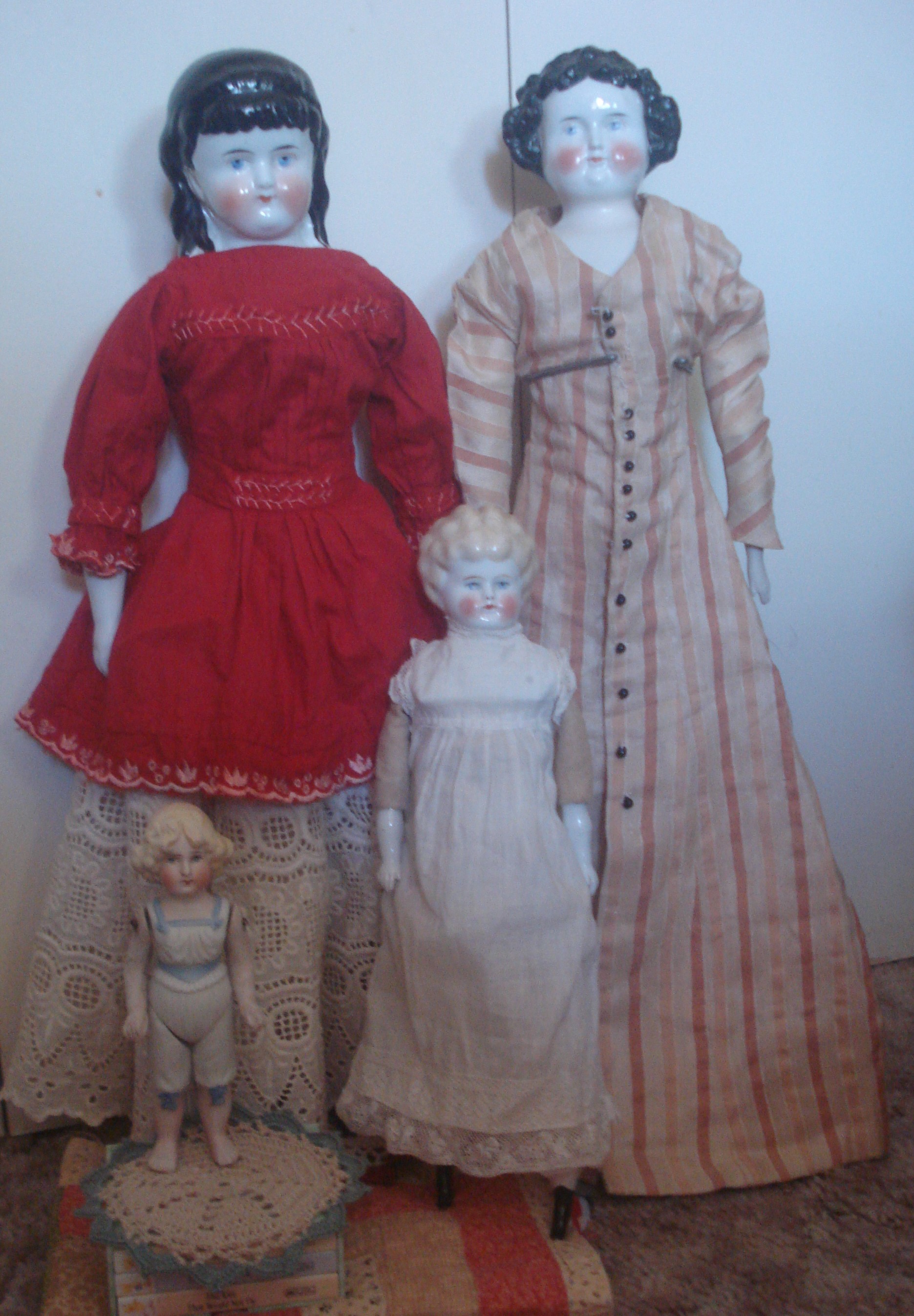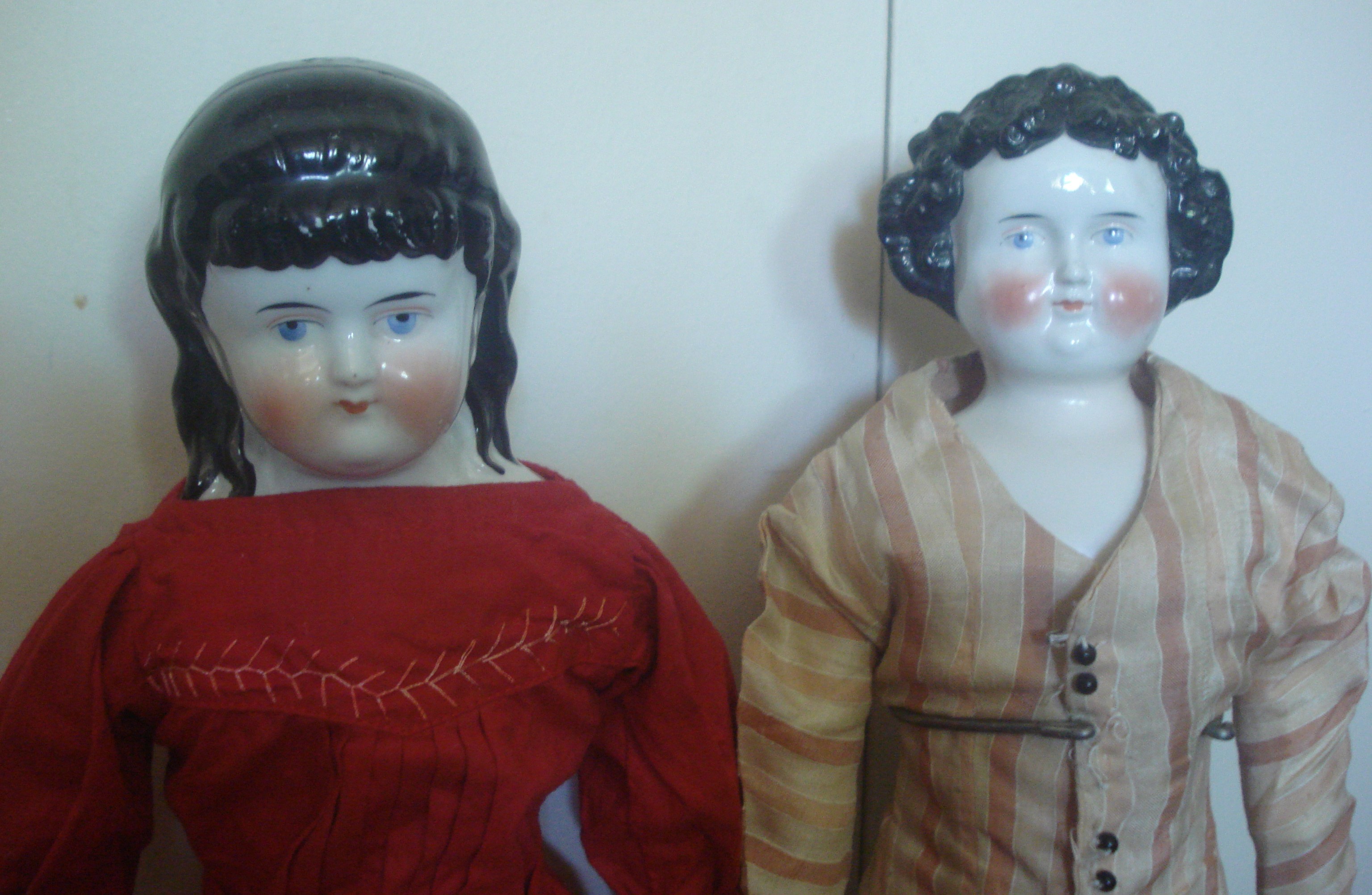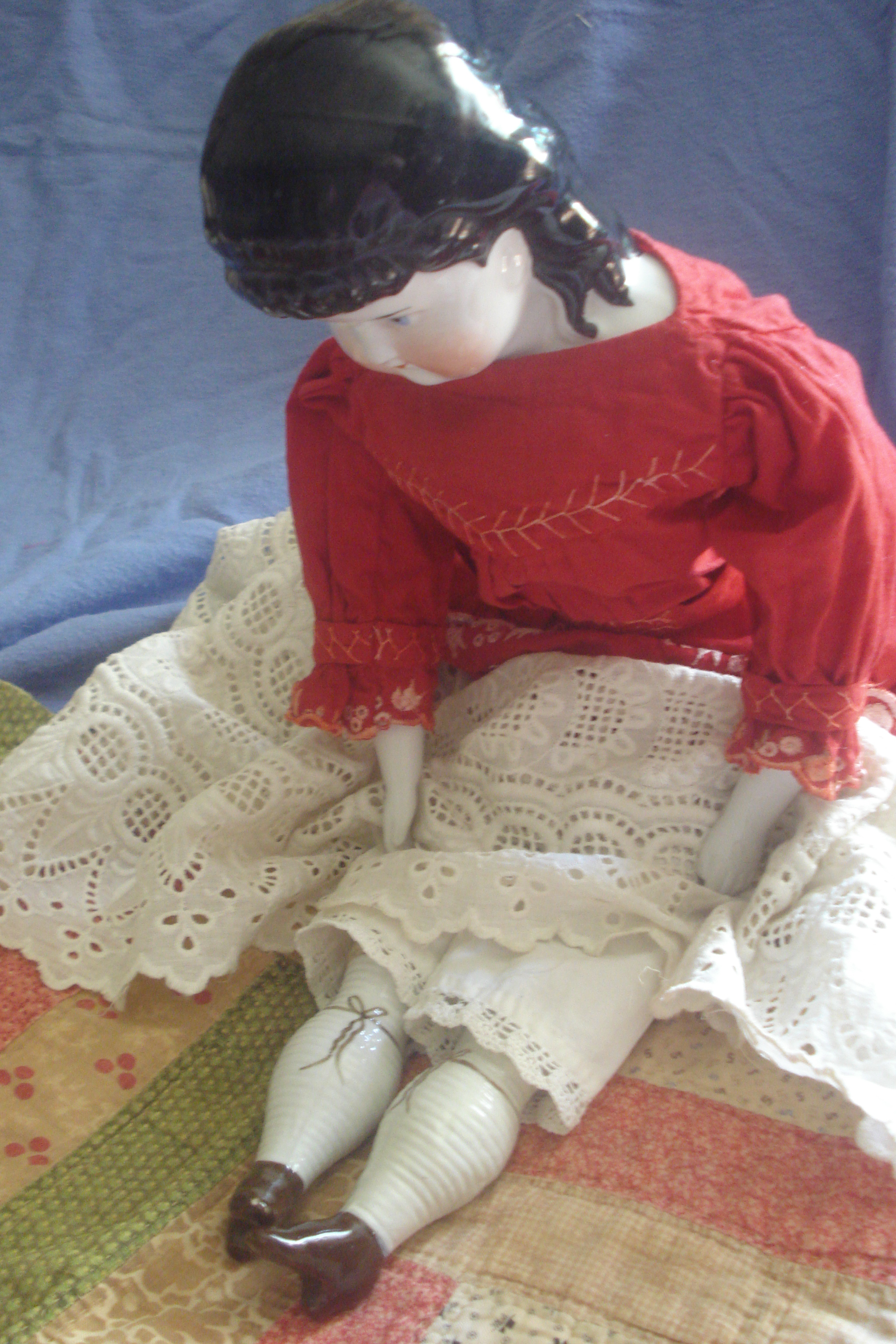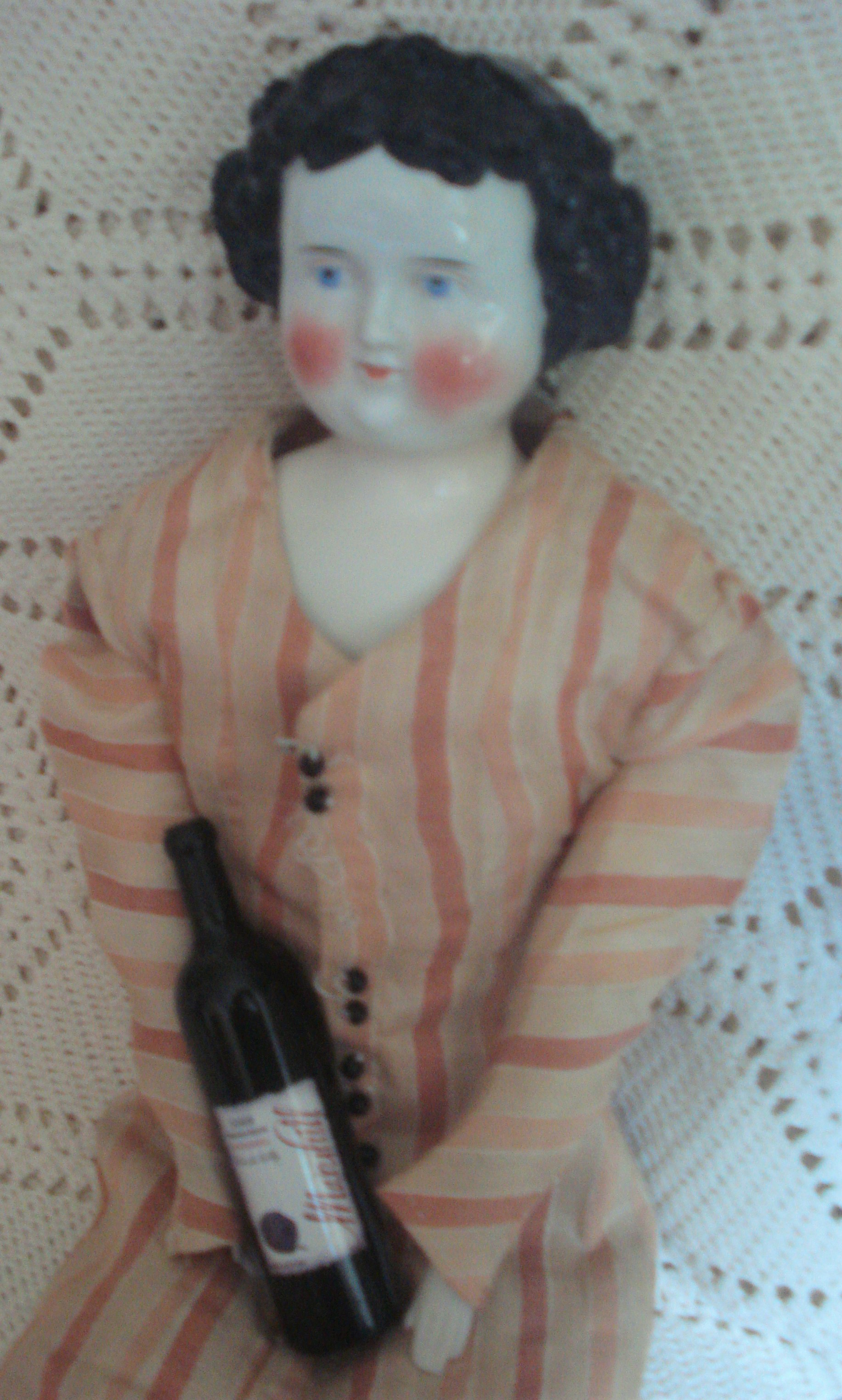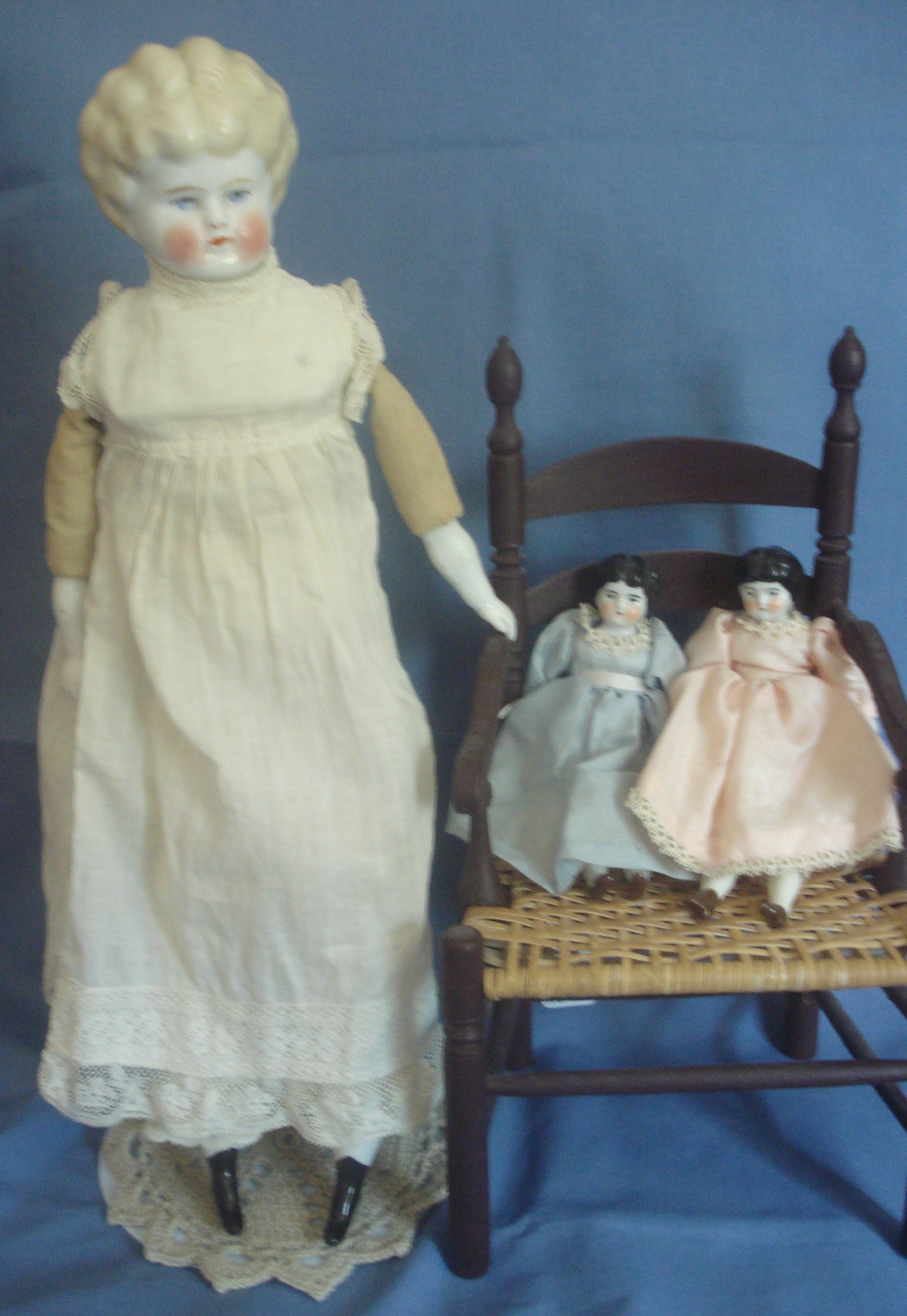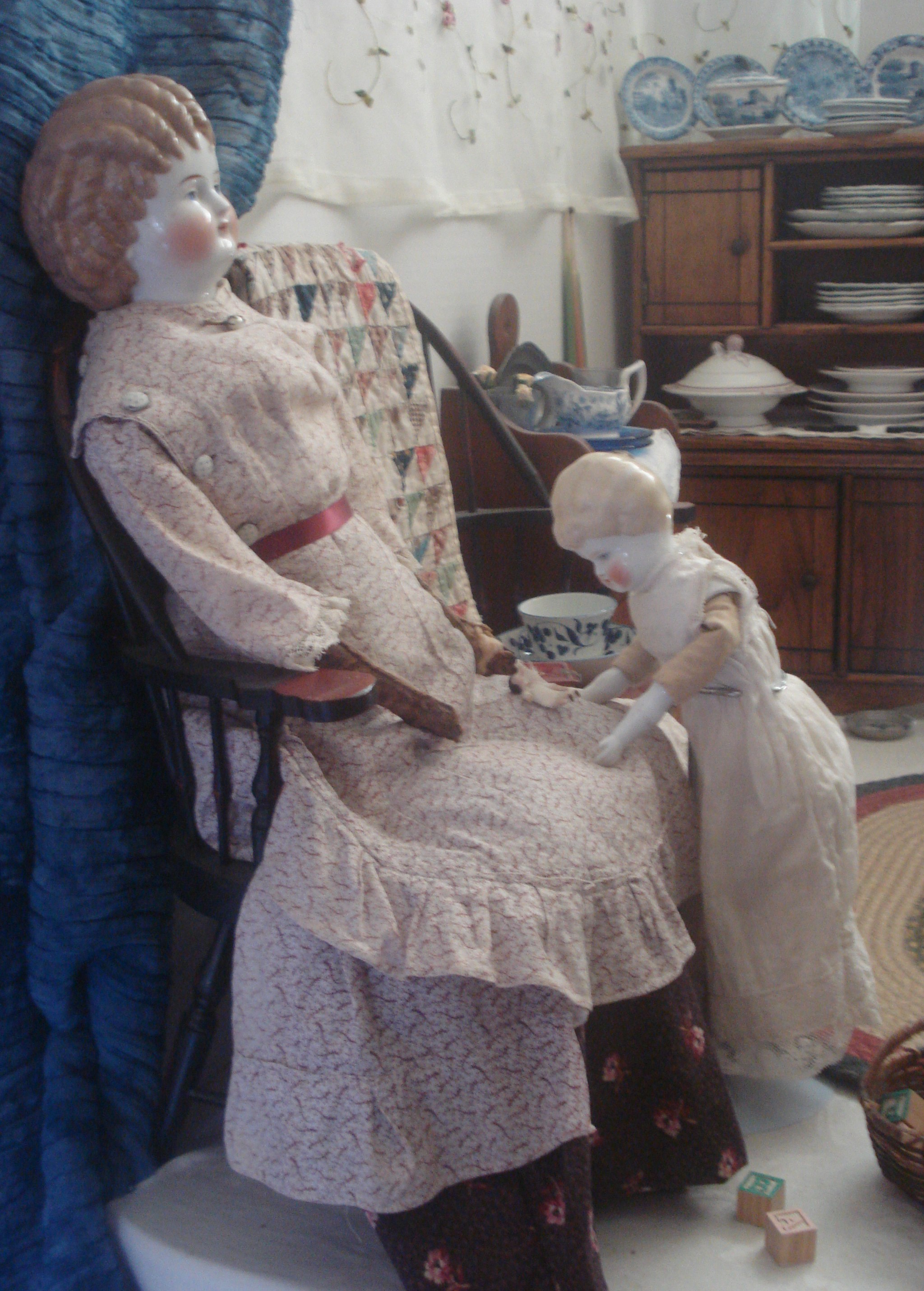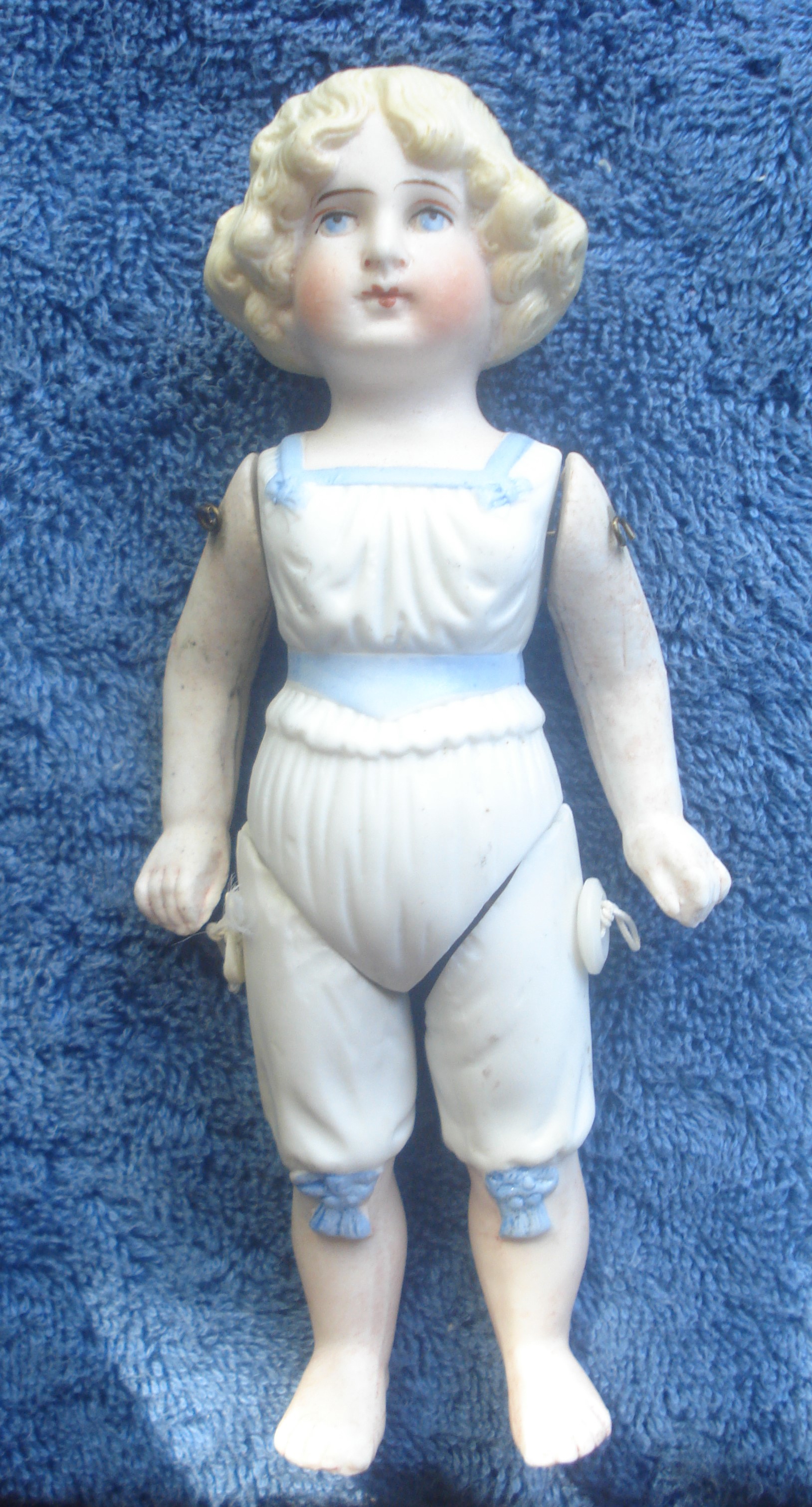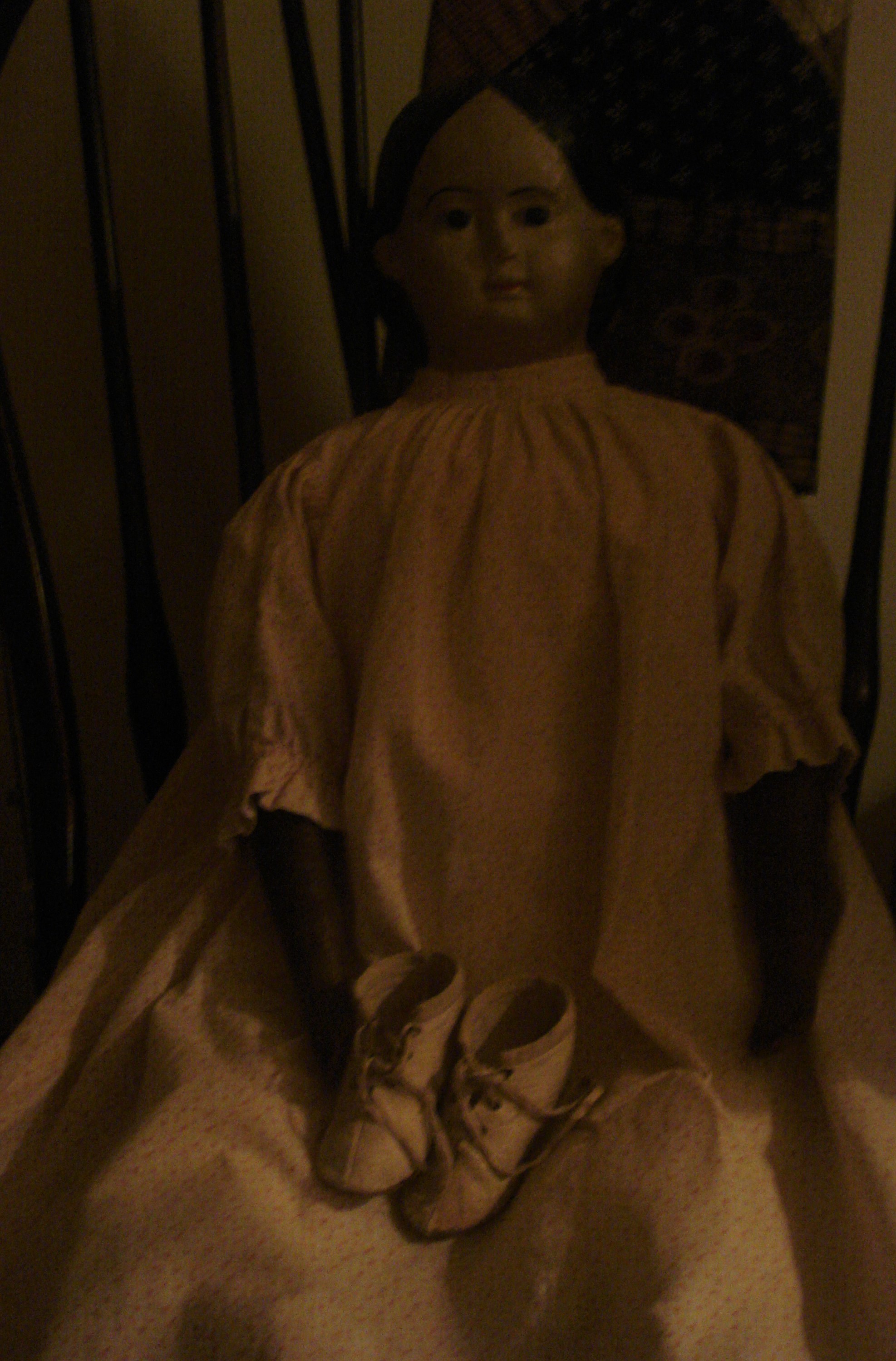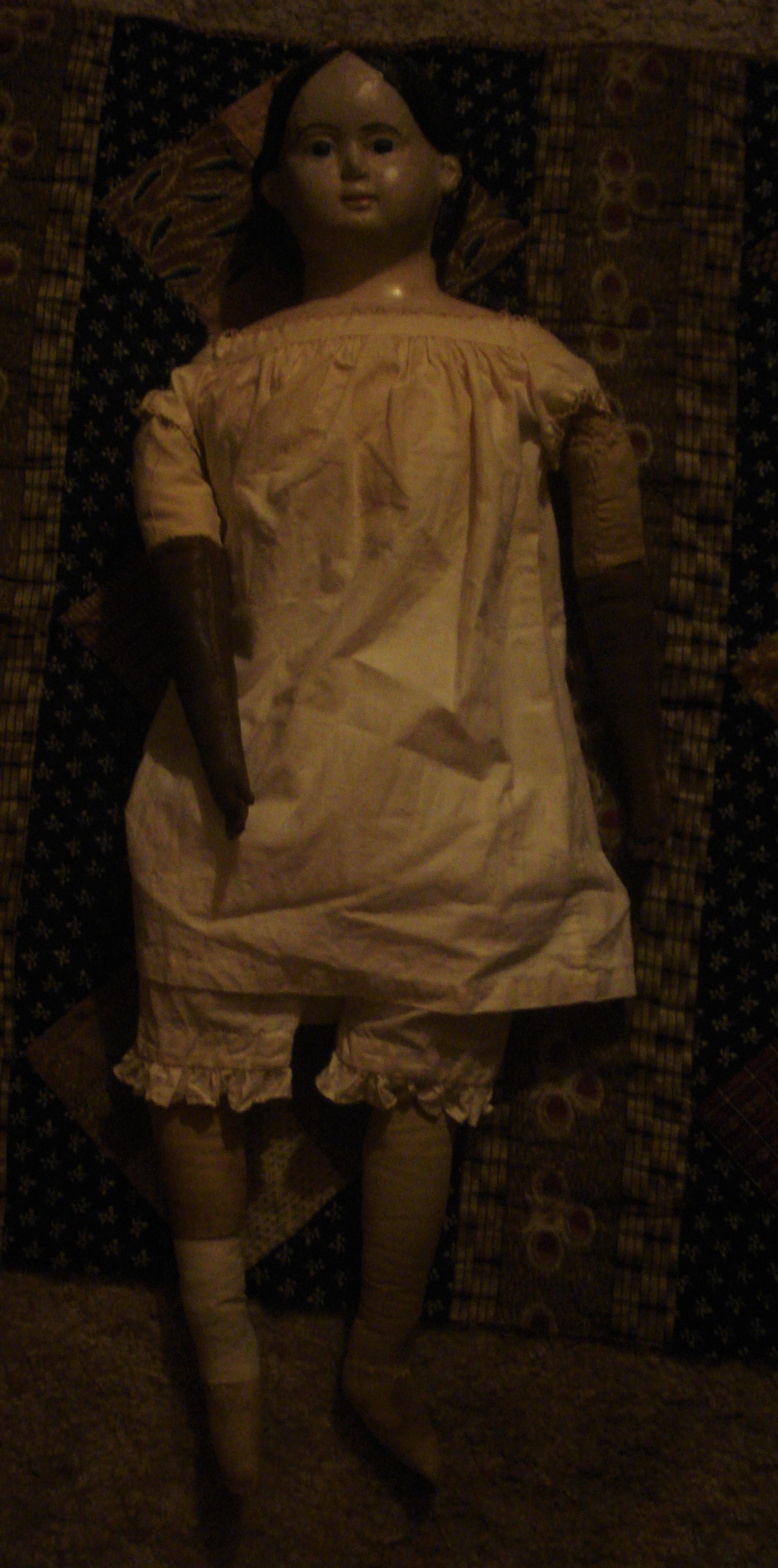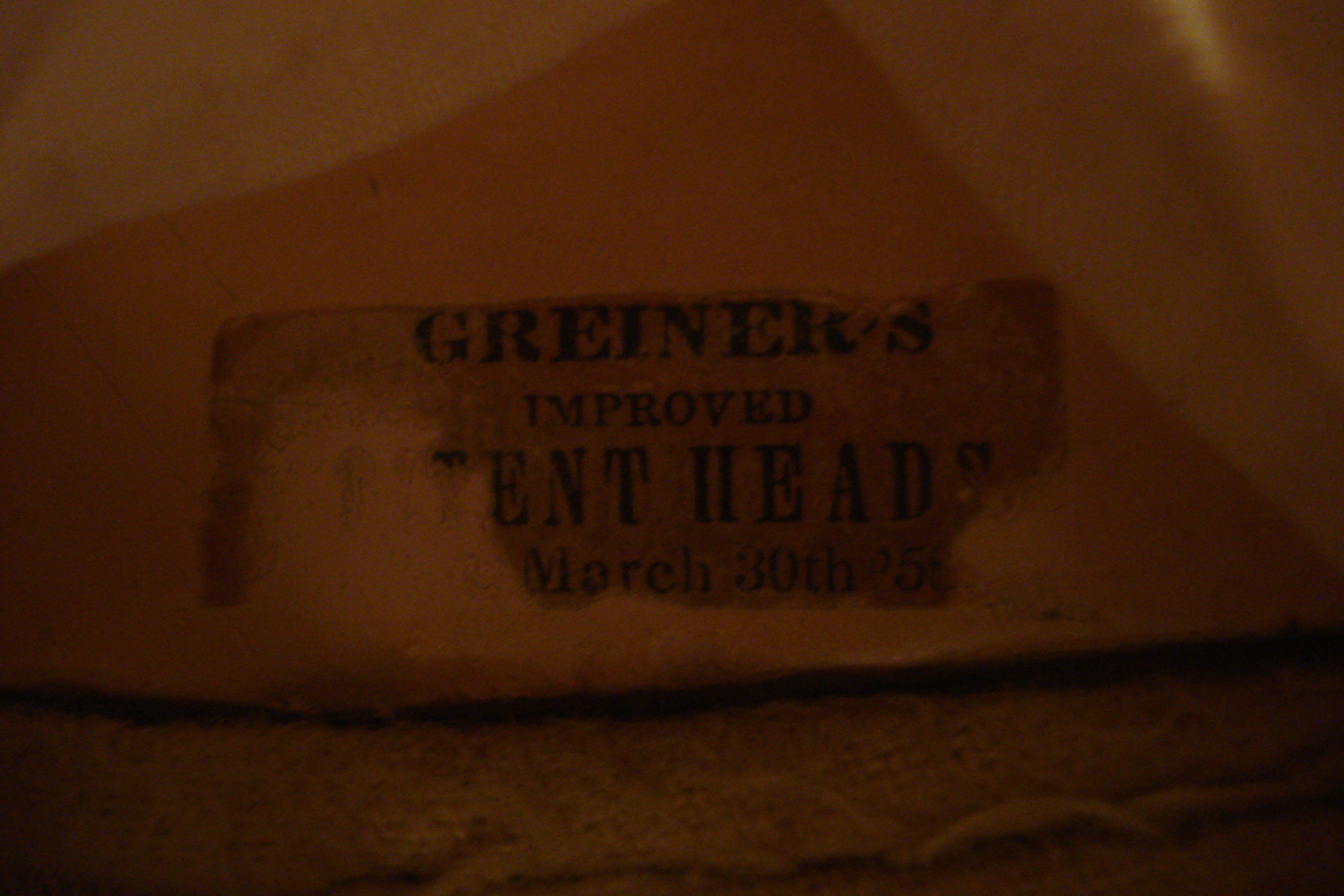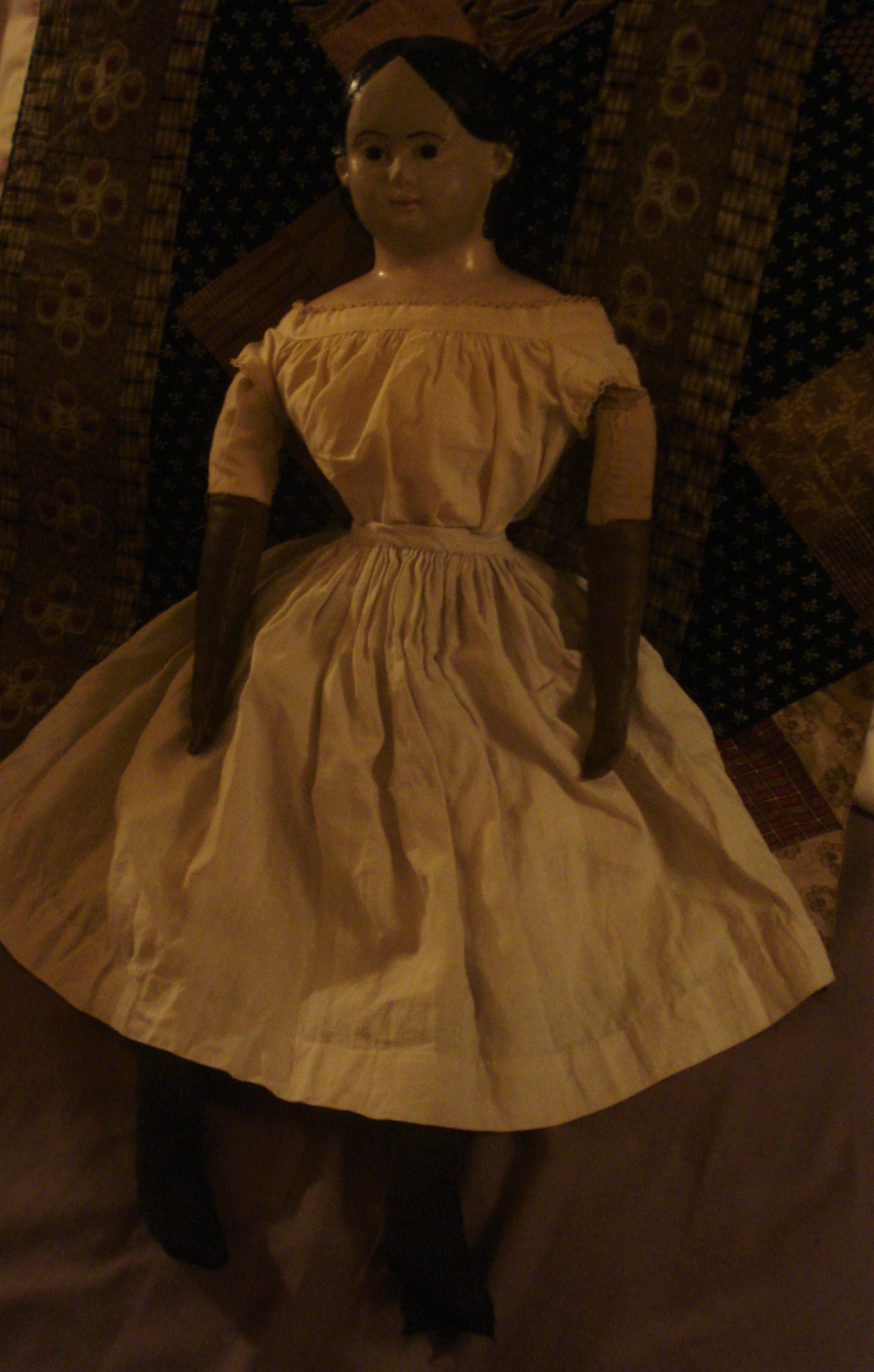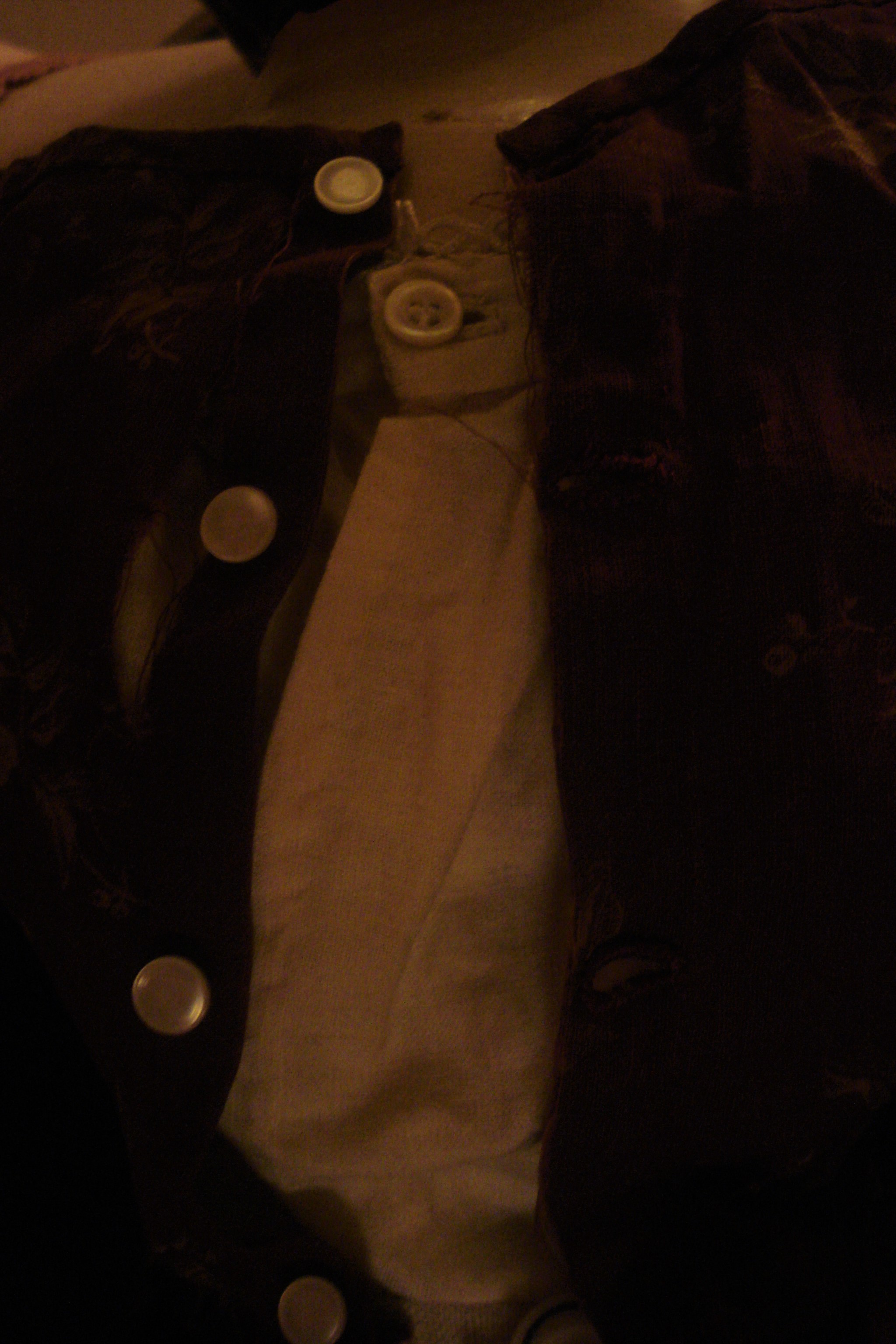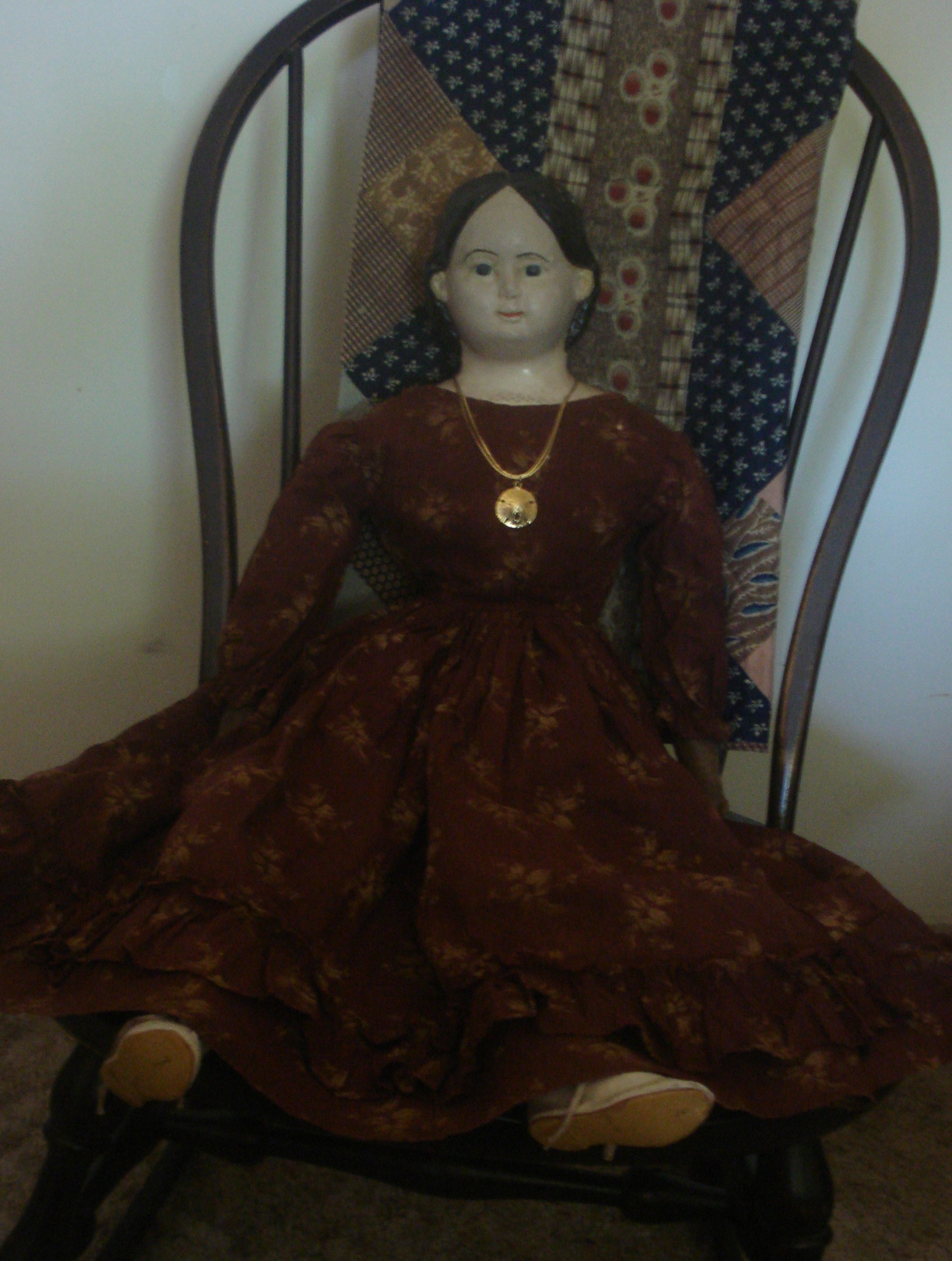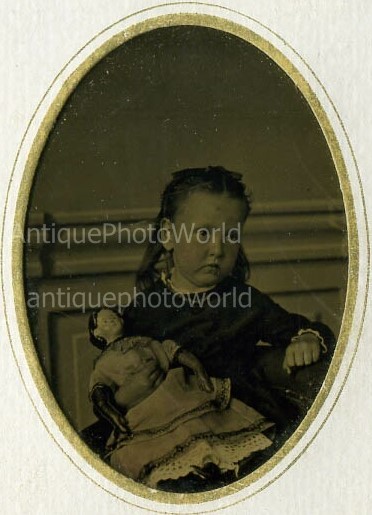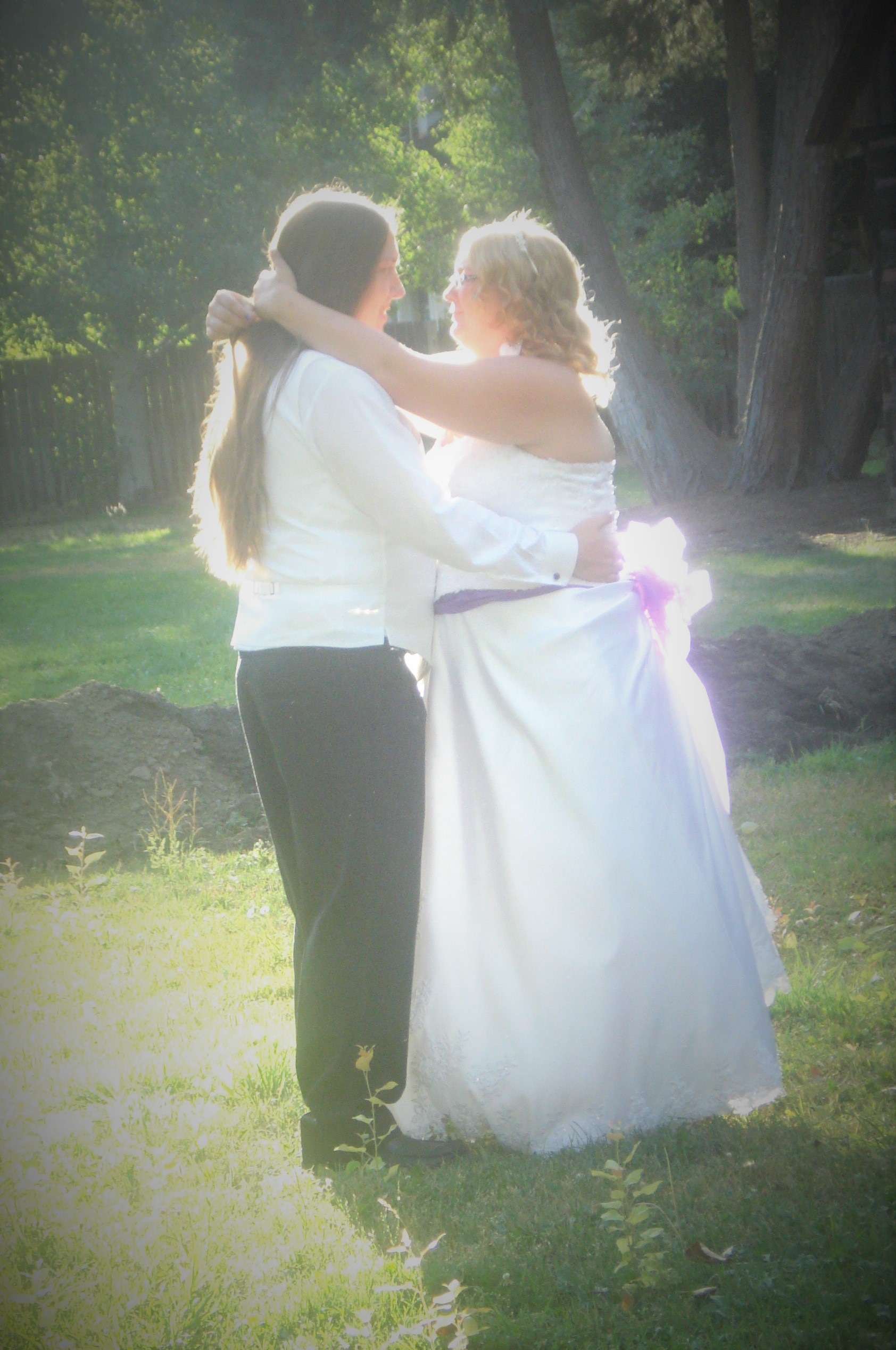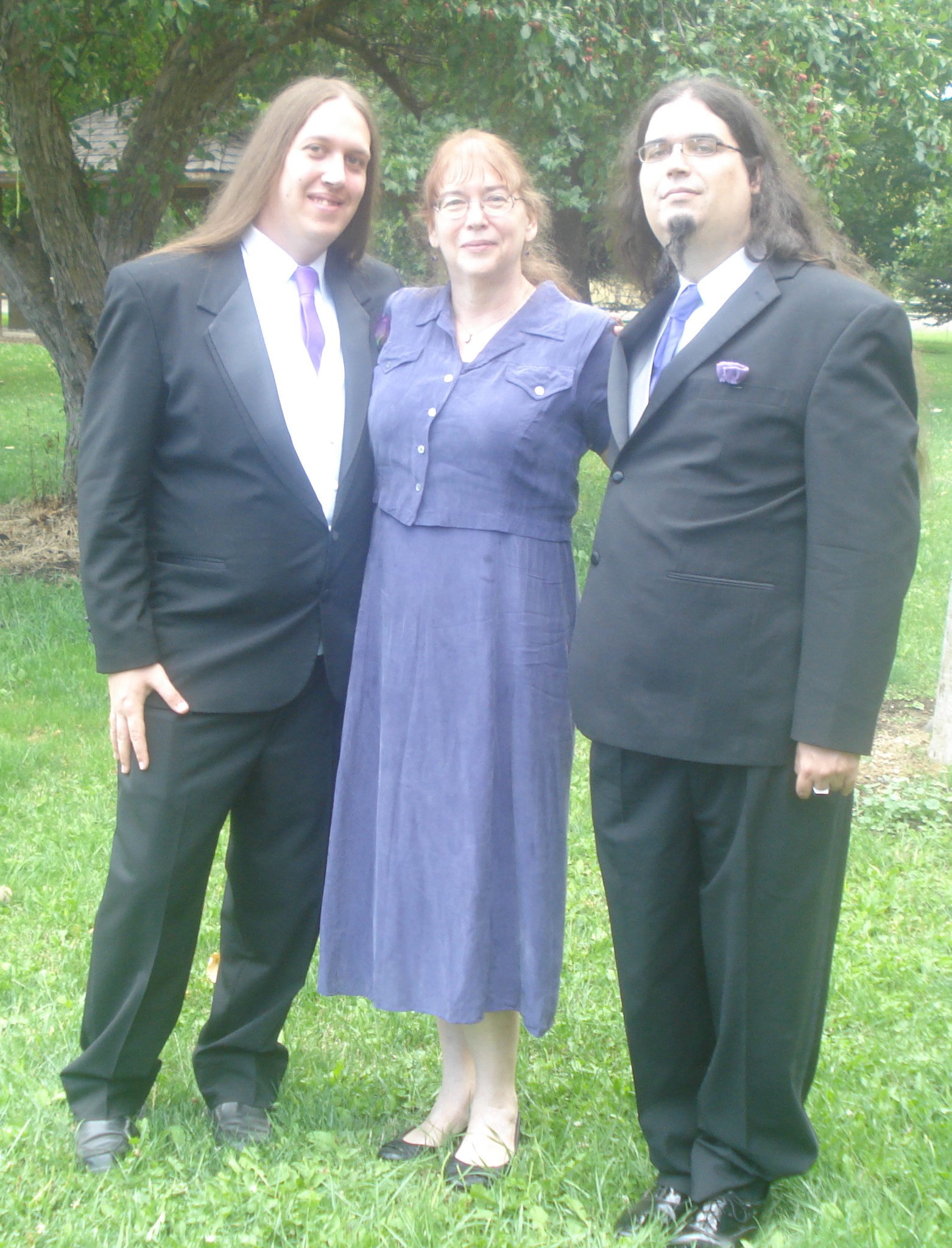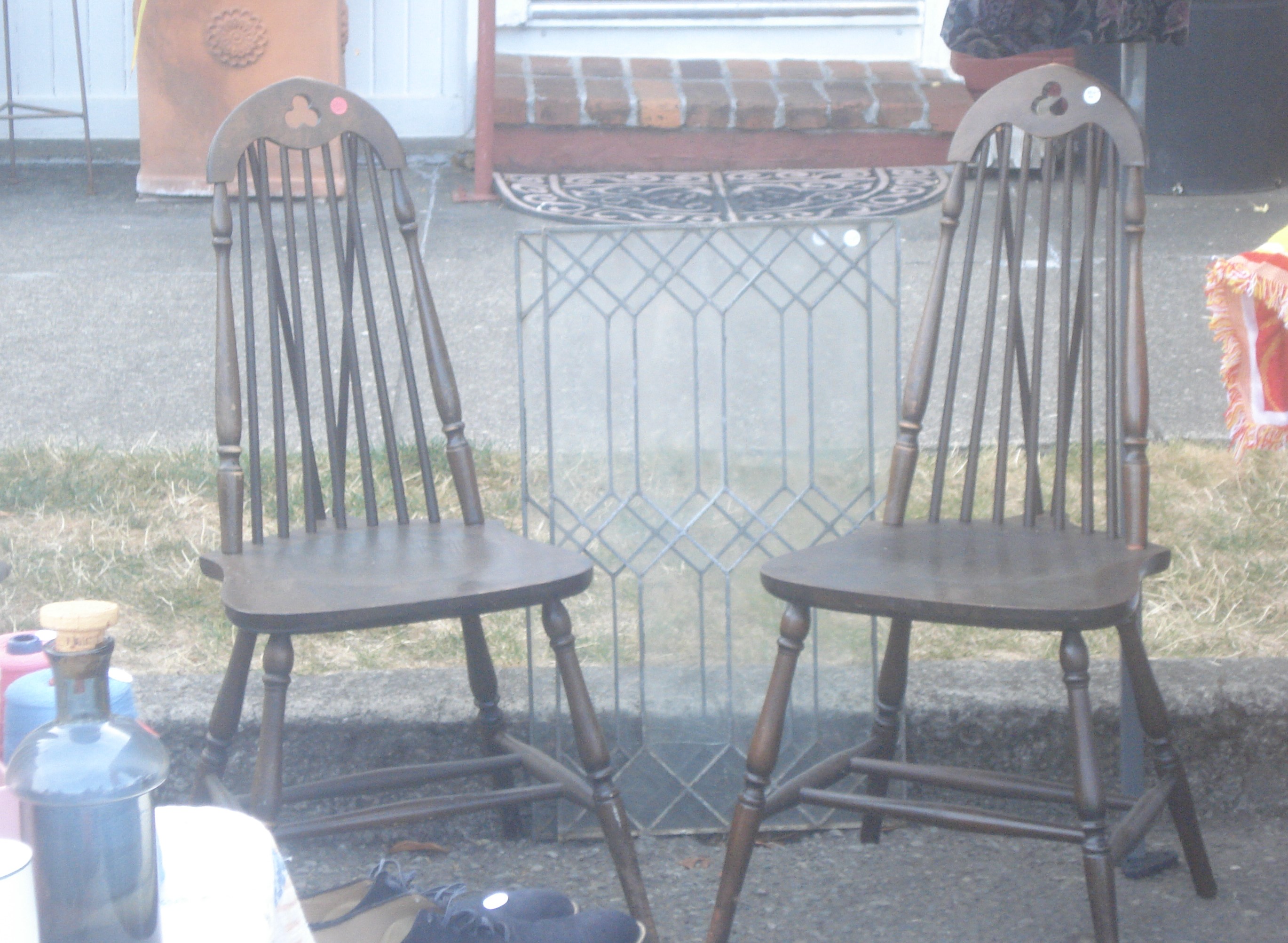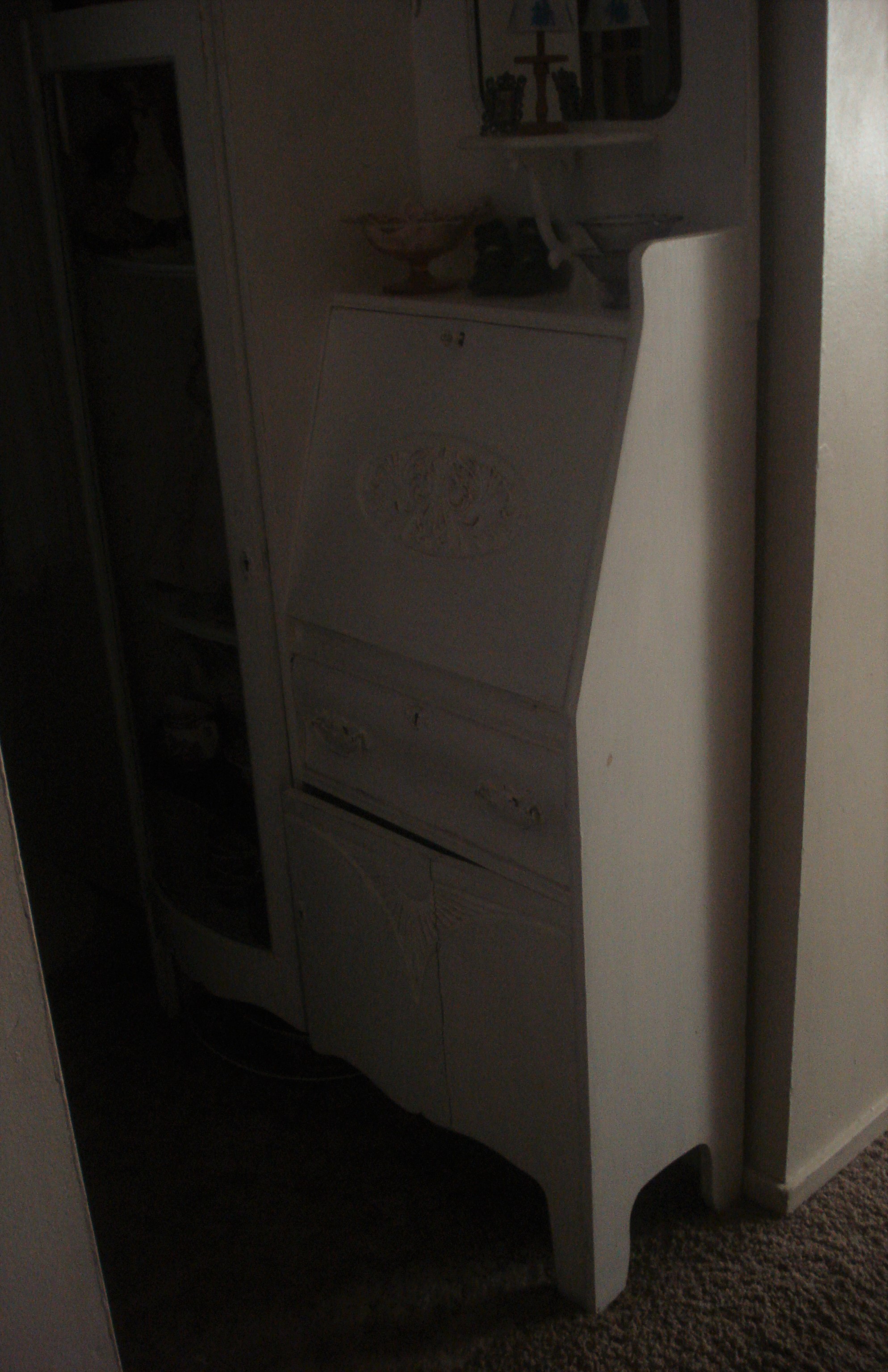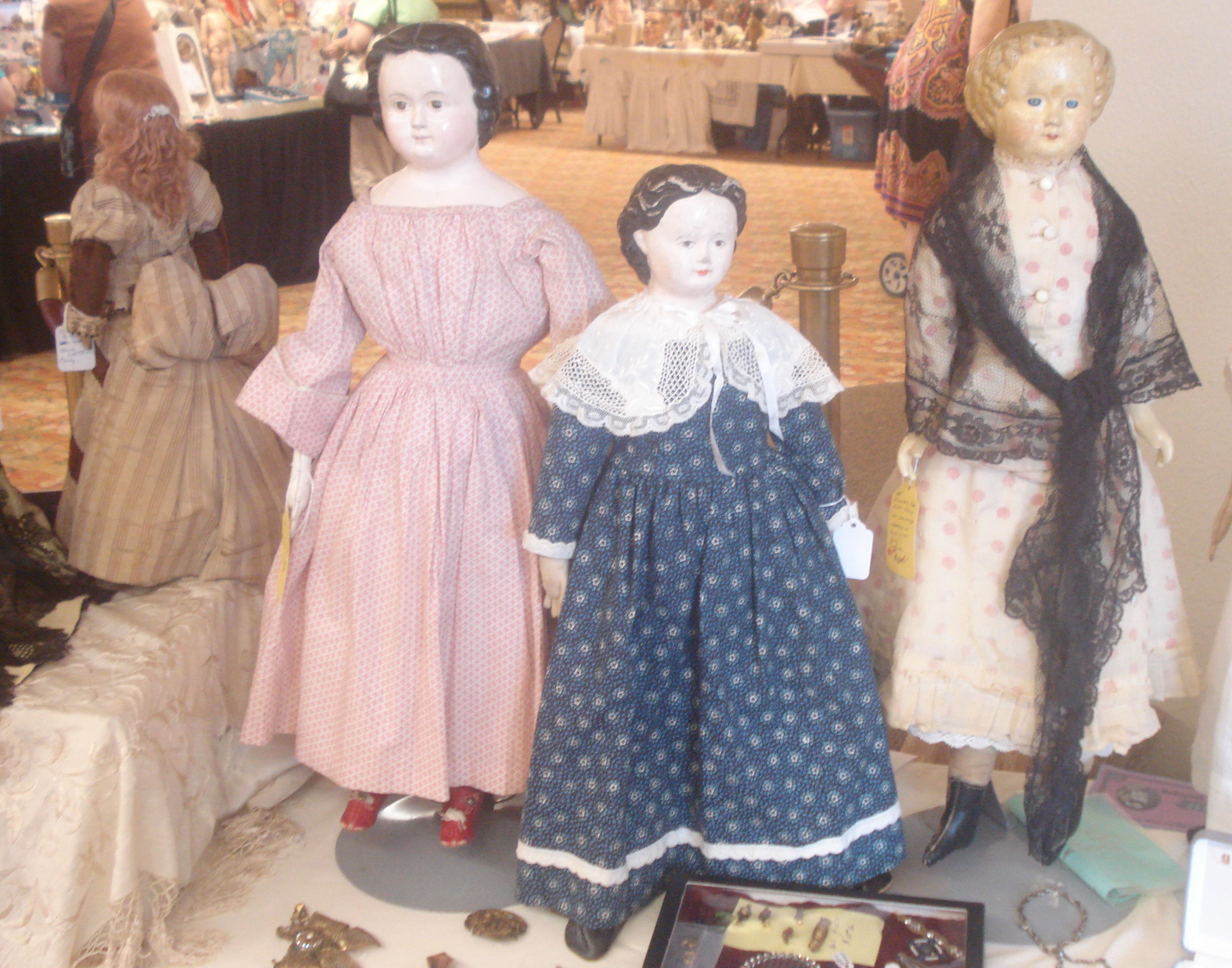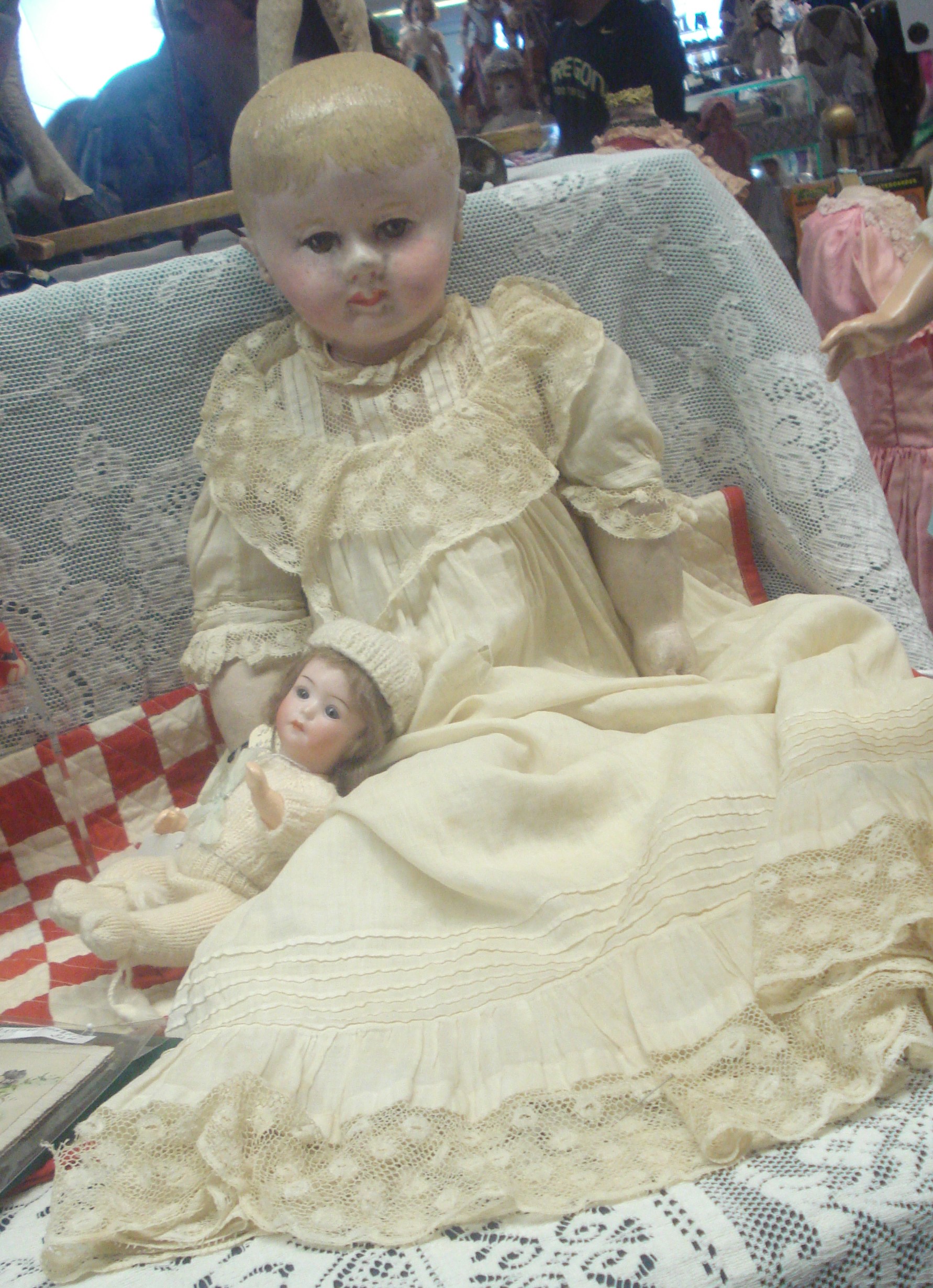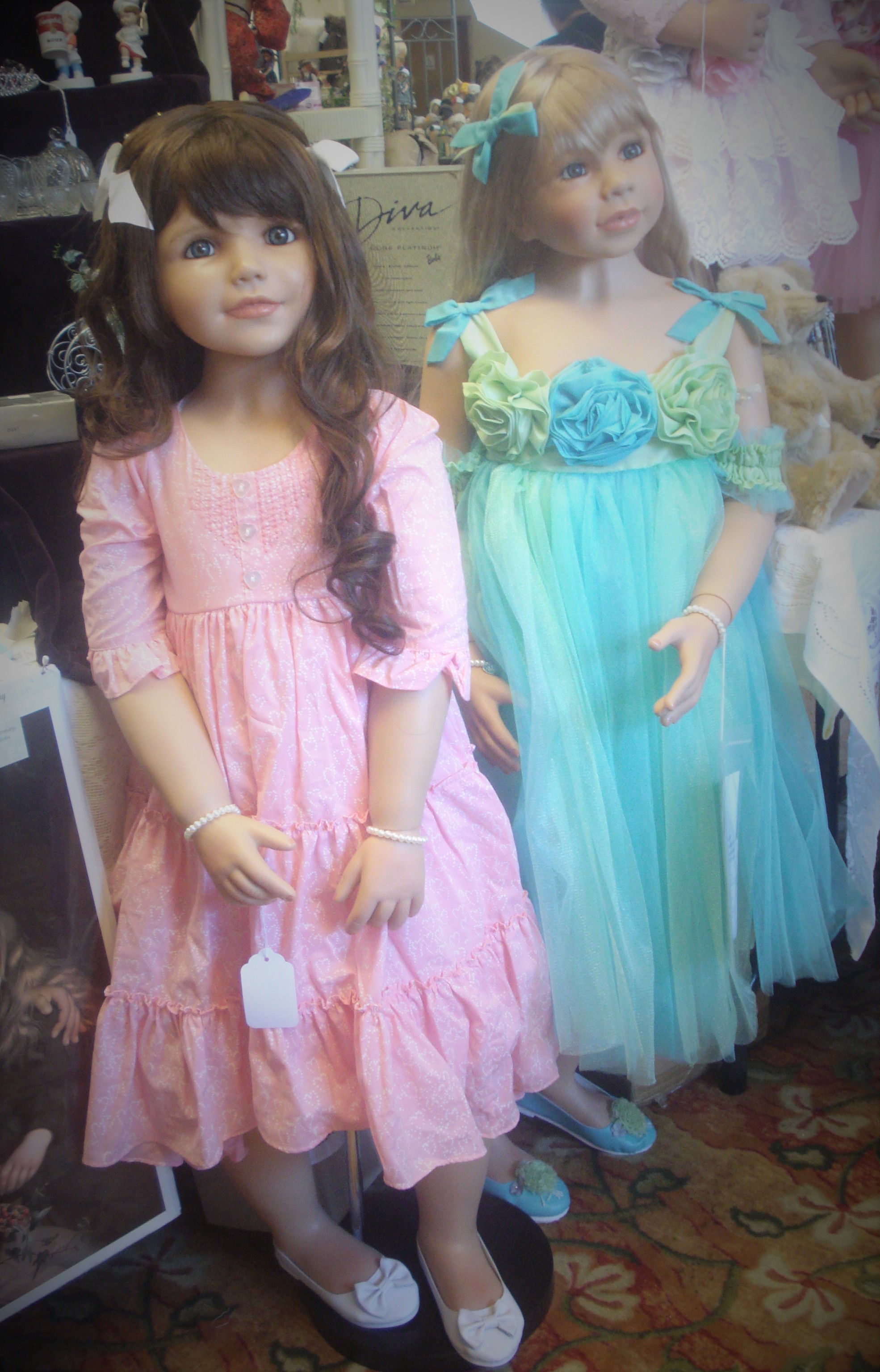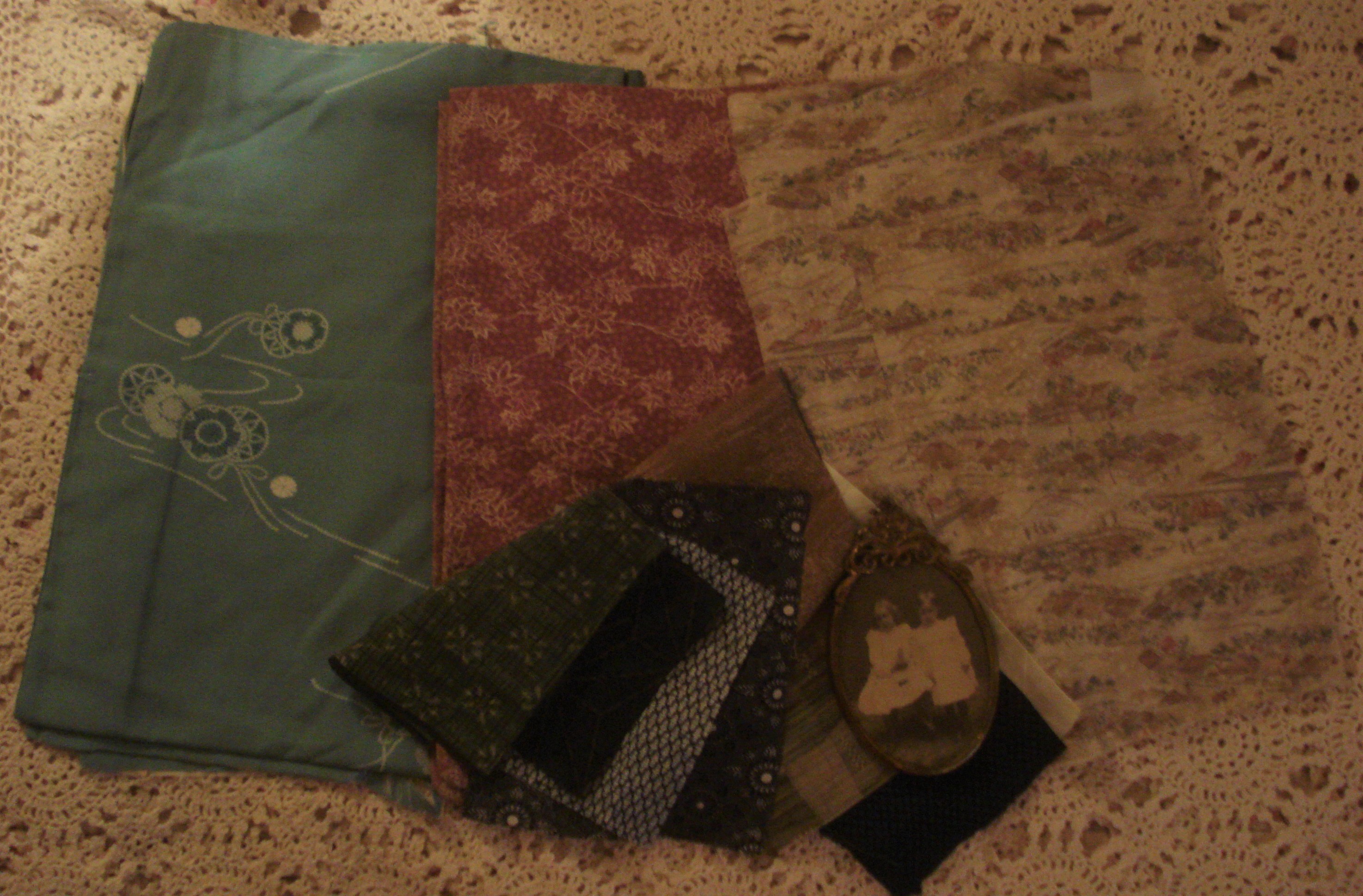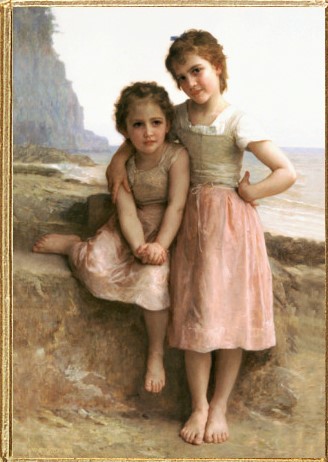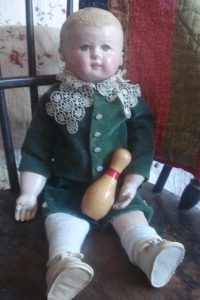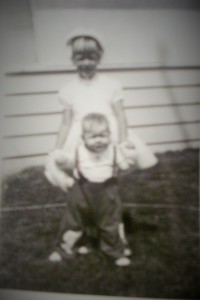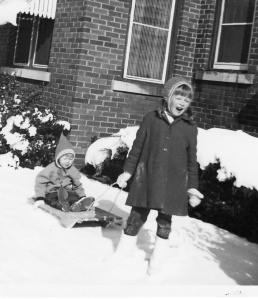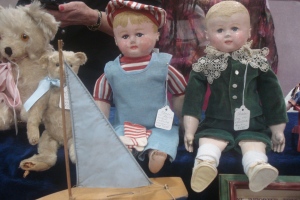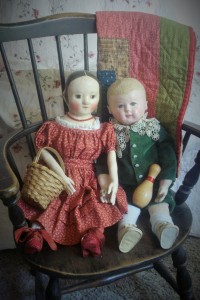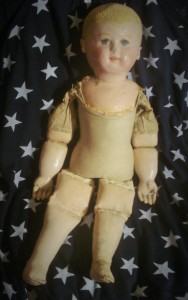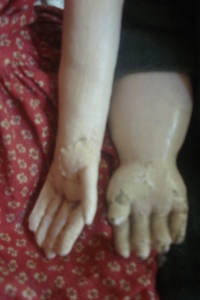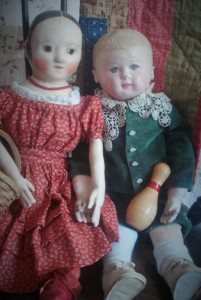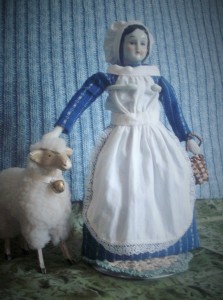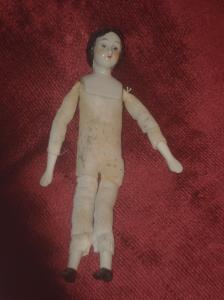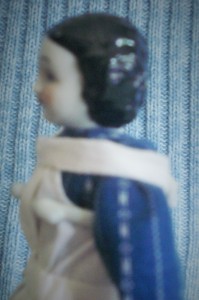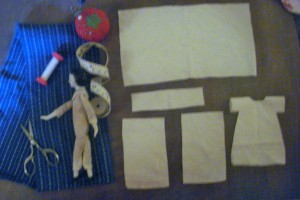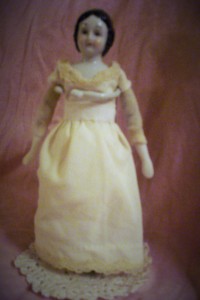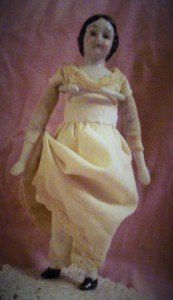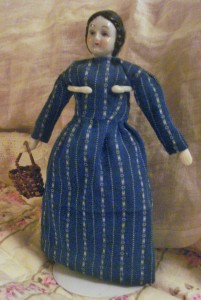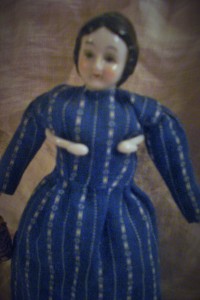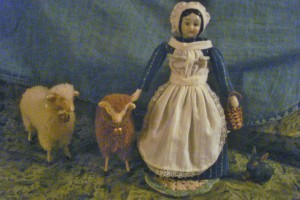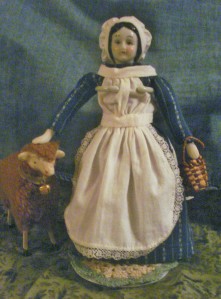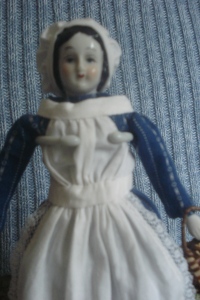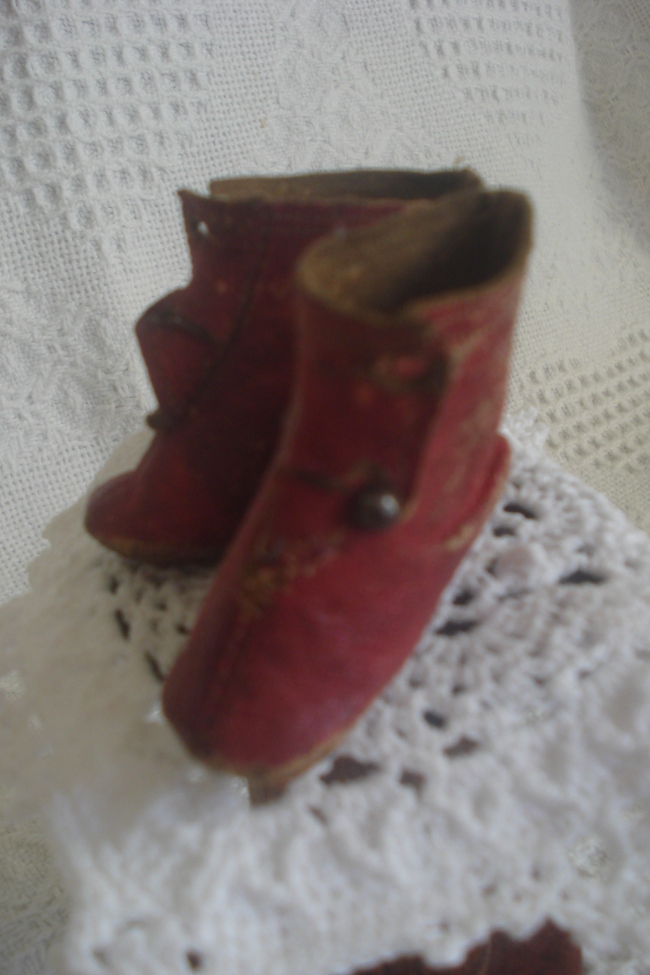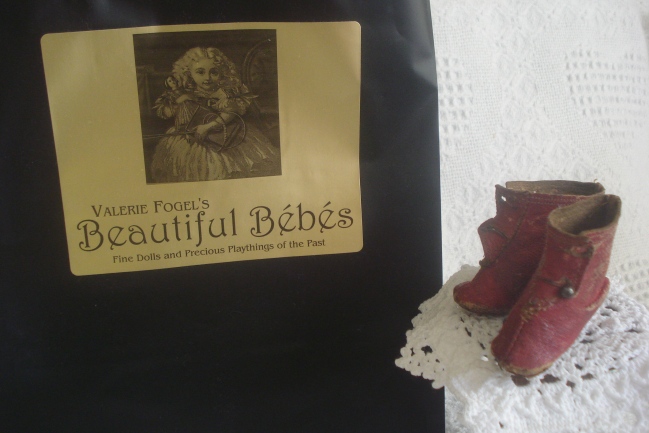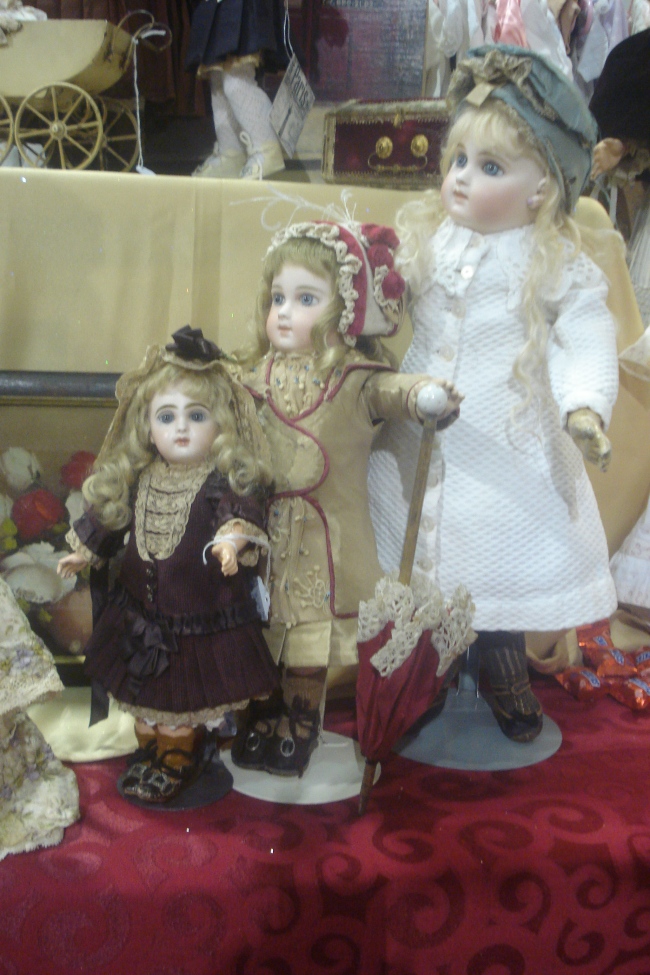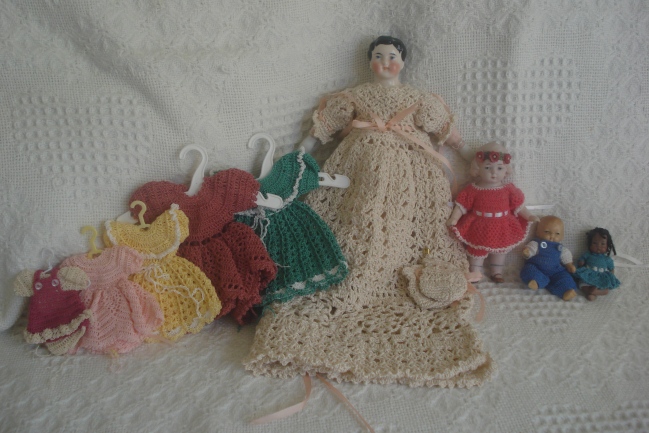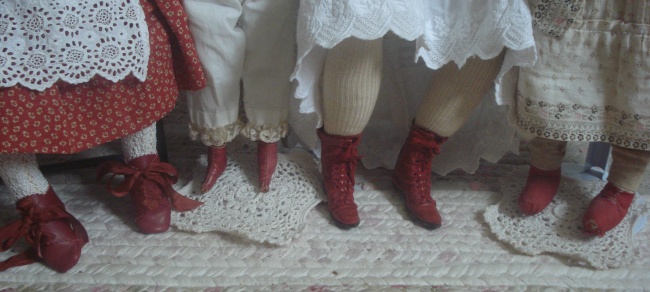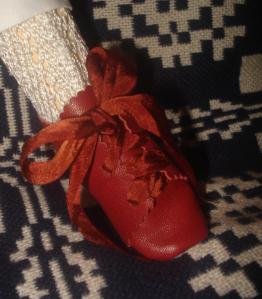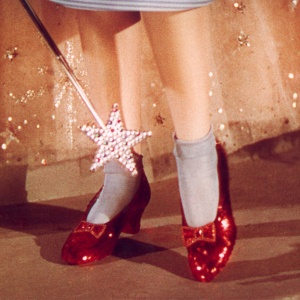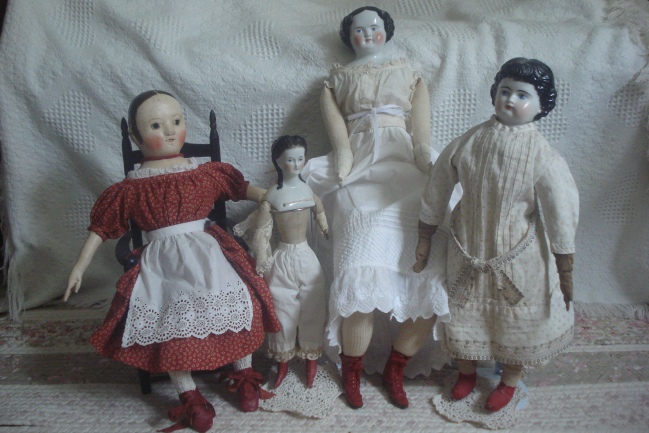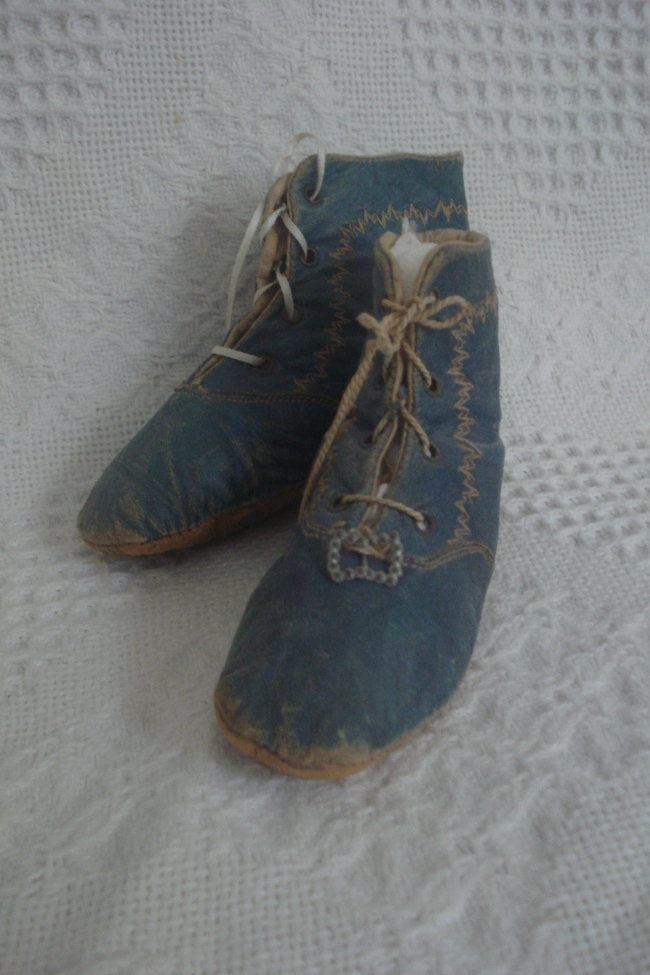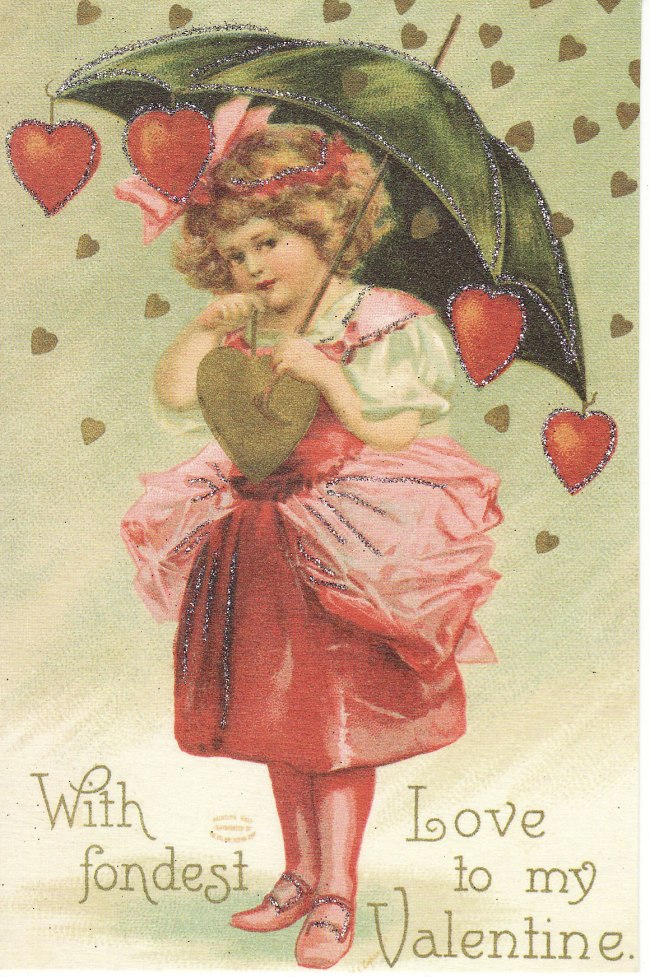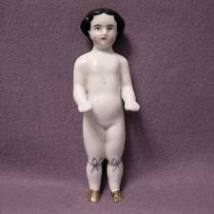
Karen with the bedroom furniture. 2014
As long as I can remember, I have had a special affinity for small things: little natural wonders like seashells, tiny bright stones, feathers and acorns, and miniatures. As a child, I made rooms for my dolls in any likely place. My mother’s fireplace clock on a table was a favorite spot to make a cozy little doll room, and pulling out blocks of encyclopedias from the bookshelf left nice smaller doll rooms with a book on top for the ceiling. Smallest of all, the low cinder block wall around our Little Rock, Arkansas front yard had cubbies that were perfect room-size for an inexpensive 5″ doll with long brown hair that I bought with my own money. In the summer, she had a magical garden fairy world with an unexpected bit of high tech–if she was kidnapped and stranded on the shelf of a higher stone wall, my brother’s battery powered helicopter would come and rescue her!
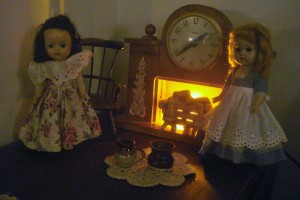
The fireplace clock now belongs to me and is still a favorite centerpiece for little doll displays. The fire is lit with a Christmas tree light bulb. Here are Karen and Vicki’s Ginny and Muffie dolls enjoying the fire’s warmth as they watch the clock for tea time.
As a young adult, I became enthralled with 1/12th scale miniatures after several trips to see the Thorne Rooms at the Chicago Art Institute. I could stand for hours gazing into those glass fronted boxes where everything was so lifelike, even with perfect lighting and shadows. I felt like I could fall right into that eighteenth century kitchen! There were no dolls to break the suspension of disbelief in these tiny realms. You expected a live person to walk in and resume living there.
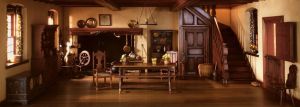
Thorne Rooms Pennsylvania Kitchen 1752.
Of course I had to make my own mini house which, given my limited means and space, was made of stacked sturdy boxes. I called it “Der Kline Haus,” which means simply “The Small House.”
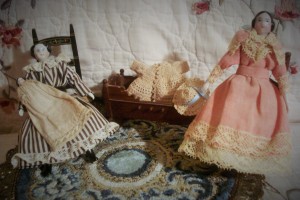
This hand-made intricately detailed 1/12th scale cradle once resided in the master bedroom of my dollhouse. I crocheted the tiny little coat and hat, that are shown here in the cradle, from size 20 cotton thread in the 1980’s when my eyesight was better. This crochet set and the rug, which is actually a vintage lamp mat, were all part of the sadly demolished Der Kline Haus. The china dolls, circa 1850’s and 1860’s, have not had the pleasure of visiting Der Kline Haus in its prime.
Then I discovered the wonder of antique toy furniture in 1/8th scale, perfect for Ginny and 8″ Madame Alexander dolls, at the Fowler House Museum just two blocks from where I lived in Lafayette Indiana. It must have been a joy and an adventure for the original owners of that dollhouse to find those little wooden treasures of furniture, and copper pots and pottery dishes, on world travels! This house was made to be played with, dolls in their settings in the rooms.
My dollhouse has been packed away for many years. The box-rooms were discarded as the wallpaper (some of which was made from wrapping paper from my wedding gifts!) faded and turned brown. Yet I still can’t resist picking up little things in the course of my wanderings. And like Auri in Patrick Rothfuss’ tale, The Slow Regard of Silent Things, I listen to the things to know where they best want to be; to know where they will be comfortable and where they belong. Until now, the little things have been in various places throughout the house, some more comfortable than others. Teeny tiny seashells found in the sand of a long-ago Far East beach are in a little bottle in the bathroom. A doll-size Japanese clasp purse is on a shelf of the desk. Little wooden and metal toys are in a small cabinet in the bedroom. Miniature books are in a drawer or on the shelf near larger books. Fingertip sized perfume bottles are in the “powder room” cabinet. Child sized dishes live in a wooden box on top of the antique sewing machine, or get overwhelmed among the larger Depression Glass. (No, they are not comfortable there!)
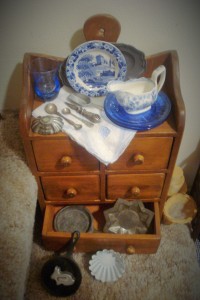
These small kitchen items, including a cordial glass, a silver corn scewer, two silver salt spoons, and toy pans and dishes, are now collected together on an antique spice cupboard that is the right size to be a doll cabinet.
Last summer I gave you a glance at my long-ago packed away and brought out anew doll bed and the newly acquired dresser to go with it, along with a coordinating ladderback chair. These, along with some of the scattered minis as accessories, make a lovely little bedroom for the lady china dolls. Paula Walton’s post (IzannahWalker.com) from July 2014 showing Edyth O’Neal’s wonderful large scale closet doll house inspired me to clear off enough shelf space in my hall closet to tuck in a little bedroom for the ladies. Besides, where else would I have room to display this 1/4th scale doll furniture? It could have ended up in the closet packed away for lack of display space, so why not as a display in the closet instead? Near perfect solution! I don’t see this enchanting room every day, but when I do slide open that closet door, I can peek in at Edith and Miss Bettina Bumblebottom as they sit on the bed in their crisp white undies, drinking tea and confiding secrets to each other.
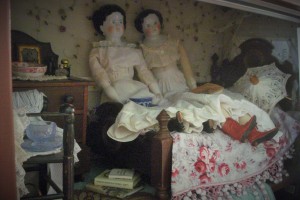
Edith (in the red boots) and Miss Bettina Bumblebottom spend hours and days with each other in the closet bedroom as they await new wardrobes. Edith is sharing her favorite sentiments from a mini book of Love Letters while her tea gets cold in the little blue Depression Glass cup on the chair to the left. Bettina’s cup is Blue Willow transferware from Occupied Japan, and was an excellent second-hand store find!
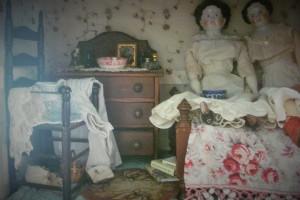
Little white kid leather shoes that long ago belonged to a bisque doll have a home now under the ladderback chair. I have had these shoes for more than 30 years before finding a place for them to truly belong.
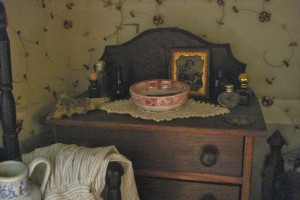
You can see on the dresser-top a doily that I crocheted, and on it is a red English transferware bowl that is probably a salt bowl. It was not intended as a child’s or doll dish, yet it fits perfectly in this setting. Barely visible in the bowl are tortoise shell hairpins for a bisque doll. They also find a place to belong here, even though neither the Chinas, nor the Izannah can wear them! Behind the bowl is a little tintype in its case. Three perfume bottles are on the right, with more small bottles and a little fan on the left.
Like my closet bedroom, Tasha Tudor’s acclaimed doll house is also 1/4th scale, consisting of special items from her childhood dollhouse made for her by her mother, of fabulous antiques collected by Tasha, and of special gifts from her friends and family. Her dollhouse, originally set up on large shelves in her home, was created for dolls that Tasha made herself. Later, a special house was made for her treasures and displayed in Colonial Williamsburg for twenty years. Now, Tasha’s dollhouse is back at her Home, Corgi Cottage. Tours, run by part of her family after her death, are very limited and are quite expensive.
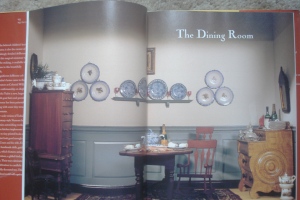
Note the antique toy Staffordshire plates on the wall shelf, and the matching tureen on the table.
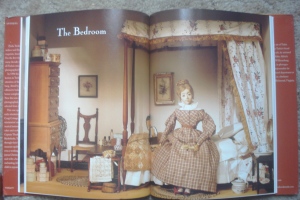
The furniture in this house is quite exquisite. These dolls have a more affluent lifestyle than my dolls who prefer their primitive style surroundings.
And now, who among China, Papier Mache, and Izannah Walker doll lovers wouldn’t fall in love with an Izannah home like Joy Harrington’s, featured in the August 2015 issue of Antique Doll Collector magazine? Not only is this small house a delightful home for antique dolls, it’s the perfect way to bring together and display a lifetime of collected small antiques! I have pored over this article, gleaning every little whimsy, and again, I am inspired to bring together my own collection in a display that is more doll house-like, if not actually a large scale dollhouse.
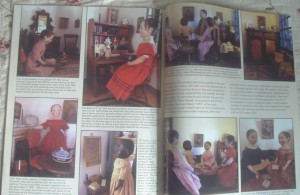
“A Visit to an Izannah Home” by Joy Harrington
At this point in time, my best option beyond the closet bedroom is my stairs which are wide enough to accommodate a multi-level keeping room display. Perhaps later in the fall or winter, when renovations to our apartment building wind down, I can try a two room display on my extra antique dining table.
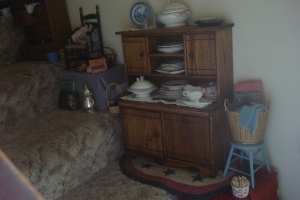
On my stairs, an antique doll cupboard holds an abundance of French, and English Staffordshire, doll china and pottery. Laundry waits to be put away in a basket near the cupboard. On the step behind the cupboard is my newest find–a little silverplate coffee pot that came from Goodwill! It is waiting to find its best place to belong.
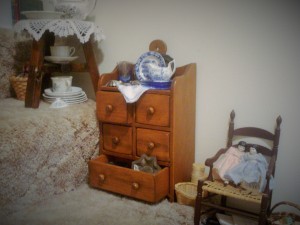
More of my stairstep display with twin Hertig dollhouse size little girls on the Seth Tudor made chair.
I am so enthusiastic about the large scale doll houses that I would like to write about more insights in several more posts. Coming up will be postings on miniature scales and choosing the right size of furniture and accessories for the dolls, on furniture and little things for putting together the displays, which seem to be fluid as collections grow and change, and on English Staffordshire toy or doll china, my newest antique collectible love. We could even have a tea party!
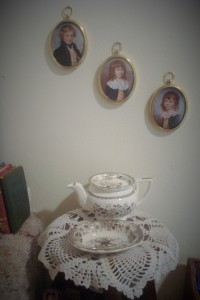
There is so much information on 1/12th scale miniatures, and so little on doll sized small things. The small things, unlike “miniatures” are large enough to be a pleasure to hold. It is also a sensual delight to contemplate small things not meant to be toys that can be seamlessly added into a doll’s space. What a fun and endearing venture into the world of the whimsical and enchantment! Come and play with me!
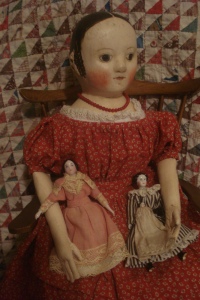
Ruby has a new soft and cuddly quilt just her size, and some very special little china dolls to snuggle up with.






































